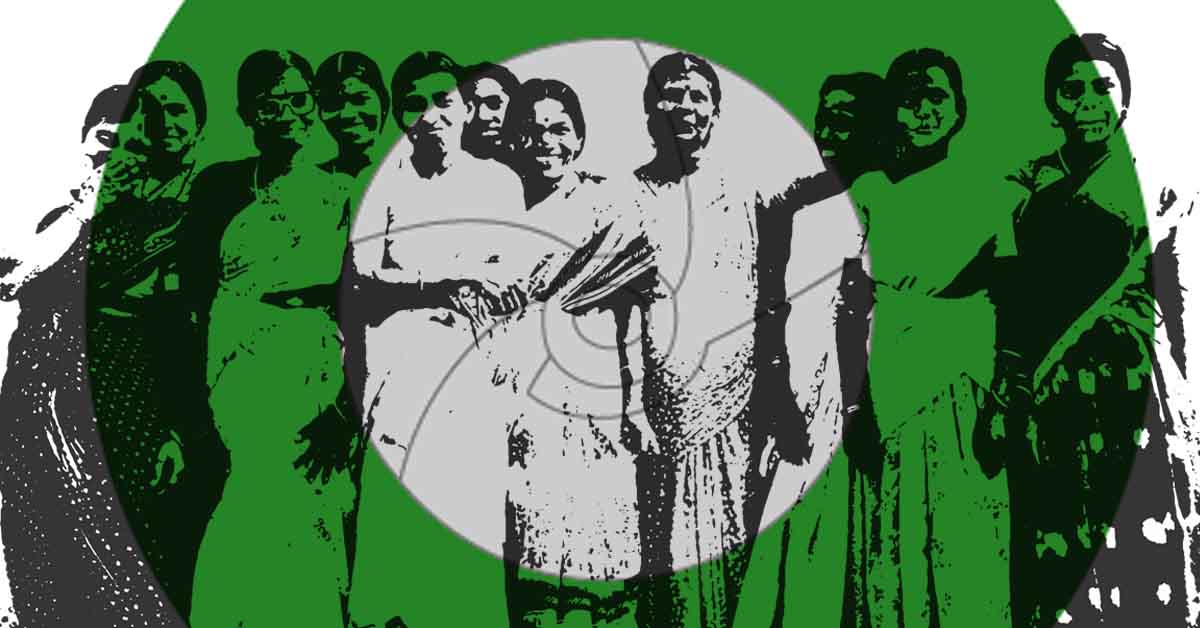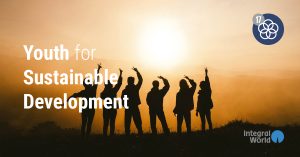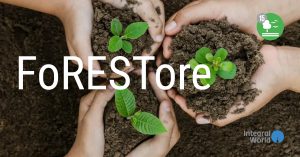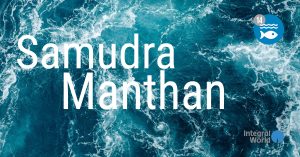Client: Auroville Foundation
Sector: Nonprofit
Location: Tamil Nadu
Languages: English, Tamil
SDGs: GOAL 3: Good Health and Well-being; GOAL 4: Quality Education; GOAL 6: Clean Water and Sanitation; GOAL 7: Affordable and Clean Energy; GOAL 8: Decent Work and Economic Growth; GOAL 11: Sustainable Cities and Communities; GOAL 12: Responsible Consumption and Production; GOAL 13: Climate Action; GOAL 15: Life on Land; GOAL 16: Peace and Justice Strong Institutions; GOAL 17: Partnerships to achieve the Goal
Funded by: Foundation for World Education
Auroville is an international township with over 2,500 residents; more than 6,000 people from the neighboring communities traveling to Auroville for education and employment and thus joining the quest of continuous “learning”. This spirit has fostered growth not only in Auroville but also in the projects and services that weave together Auroville and its neighboring communities.
“Those who are in contact with the villagers should not forget that these people are worth as much as they are, that they know as much, that they think and feel as well as they do. They should therefore never have an attitude of ridiculous superiority. They are at home and you are the visitors.”
The Mother
Introducing Auroville without borders
Auroville, which has been called “A Dream of the Divine”, “the City the Earth needs”, and “the City of Dawn”, has the singular purpose of realizing human unity. People from every corner of the world have been traveling to Auroville since 1968 aspiring to fulfill this aim, which also happens to be at the very core of Indian culture.
“India has become the symbolic representation of all the difficulties of modern mankind. India will be the land of its resurrection—the resurrection to a higher and truer life.”
Sri Aurobindo
In its early days, Auroville depended heavily on the wisdom and site-specific knowledge of the local communities. It was with their help that the practices of indigenous forestry and harvesting rainwater in communal tanks were revived. The founder of Auroville, known to all as The Mother, was particularly attentive to the local people and emphasised a fraternal relationship between Auroville and the surrounding communities.
Over the years, the Auroville experiment has been accepted and embraced by both the neighboring communities and by Indians at large. During the community’s 50th Anniversary in 2018, we honoured this work and encouraged it to grow and allow the dream to spread further within India and the world.
As part of the anniversary celebration, we exhibited over 30 bioregional community development initiatives spread across the fields of environment, education, health, social enterprise, financial inclusion, infrastructure, capacity building, leadership and cultural preservation. Through this exhibition, we aimed to bring to light work that was mostly invisible thus far.
Auroville: Striving to effect change
For 50 years, Auroville and the villages in the bioregion have grown and developed in tandem. Auroville began life on severely degraded land that was termed “most backward area in need of development” by the Government of Tamil Nadu. Thanks to the inspired individuals initiating autonomous projects, Auroville’s “outreach work” has met many key community needs. Some of these projects concentrated on a specific activity e.g. dental health while others attempt to develop models for what is called integral rural development.
There are 13 villages in the immediate area of Auroville, comprising about 40,000 people, and altogether approx 40 villages in the larger bioregional area. Accordingly, while some projects remain concentrated within Auroville’s boundaries, others are pioneering models for life in rural India and the world.
The thrust of this work weaves together the shared aspiration for human unity. Along the process of co-creating, we are learning from within and without; discovering in the spirit of experimentation the tools and conditions leading to the emergence of an equitable and sustainable earth where justice and compassion prevail.
There was however an urgent need to move from the abstract to the demonstrable, to summarize the work flowing in and around Auroville in a collective voice. The proverbial bigger picture, reflecting the role of the communities as well as that of various projects in meeting their needs, needs to be displayed.
Auroville Bioregional Development Activities: Bridging the land and people around Auroville
As a first step towards showcasing the work happening around Auroville, we created an umbrella brand Auroville Bioregional Development Activities (ABDA). A particular creative effort in this regard involved the creation of a logo at whose center lies the The Banyan Tree, which is also the geographical centre of Auroville. The banyan’s aerial roots reach out and, on reaching the ground, form the roots for fresh trunks. Similarly, Auroville’s work flows outward into the surrounding bioregion. Combined with the tree is a representation of the rising sun symbolising both Auroville’s own growth and support for the neighbouring communities – Auroville being a ray of hope for them, so to speak.
A key component of ABDA is the permanent exhibition of Auroville’s work installed at the Visitor Centre, which is already purposed towards satisfying the curiosity of both day travelers and interested guests, and give them a taste of Auroville. The Centre was conceived as a demonstration site for alternative sustainable technology, renewable energy, alternative building techniques and integrated waste water management. It was thus the perfect space within which to tell interested visitors about Auroville’s purpose – of realizing human unity – and the practical implementation thereof.
This exhibition depicted all the seven different areas of focus spanned by Auroville’s projects, including:
1. Environment: Going from Arid to Green
Right from Auroville’s early years, many projects focused on erosion-control, reforestation and growing organic food. With the maturing of these projects, the knowledge gained from them is transferred to the bio-region and beyond, helping model green practices in India and elsewhere.
2. Economic Development: Aiming for a Sustainable Livelihood
Today, over 6,000 people from the villages around Auroville have found employment in Auroville’s various sectors. They are also able to access finance and, for their children, educational opportunities. Many undergo training and gain useful skills, in the process becoming empowered to establish their own services and enterprises.
“… there, work would not be a way to earn one’s living but a way to express oneself and to develop one’s capacities and possibilities while being of service to the community as a whole.”
The Mother
3. Health: Strengthening Body and Mind
Health services and camps catering to the surrounding villages began in Auroville in 1969, with a dispensary and a clinic. Today, Auroville has a health center and dental clinic whose services are available to communities across the entire bio-region. A mobile team of local women trained as health workers also visits the village sub-centers offering primary health care, traditional medicines, and natural therapies.
“… the entire functioning of the body is a discipline, and if there is even one part that does not want to follow the discipline—due to revolt, or incapacity, or whatever reason—it stops following the discipline, you fall sick.”
The Mother
4. Education: Establishing interactions between nature and nurture
Auroville’s outreach education is based on the principles of Integral education guided by the insight that humans are born with a unique biological, social, and spiritual identity, that humans both unfold from the dynamic of that unique identity and develop through an ongoing interaction between nature and nurture.
“In this place, children would be able to grow and develop integrally without losing contact with their souls; education would be given not for passing examinations or obtaining certificates and posts but to enrich existing faculties and bring forth new ones”
The Mother (extract from the Dream)
5. Culture and Arts: Developing the building blocks of our heritage
The cultural centres at Auroville offer multiple opportunities for exploring cultural identity. They connect Auroville and its bio-region via the study of traditional arts, music, dance, sports, cooking, and natural remedies. This provides a platform for interaction and exchanges between communities.
“. . .the whole organization of the arts and sports, even of food and all the rest, was ready in the subtle physical—ready to come down and be embodied . . .”
The Mother
6. Sports: Fostering Harmony and Health
The Auroville Village Action Group (AVAG), Auroville Sports Resource Centre (AVSRC), Dehashakti, and the bio-regional youth network Paalam have joined hands to develop extensive sports programmes through a regional sports association linking Auroville with 20 surrounding villages. This association aims to foster unity and skill development through developing sports grounds and facilities including coaching for regular competitions at local, regional, and national levels.
“Physical culture is the process of infusing consciousness into the cells of the body”
The Mother
7. Community Development: Bringing together all sections of society
Community development imbues all communities across society – irrespective of caste, race, gender and nationality – with the shared dream of a sustainable future through a participatory and integral framework.
“In short, it would be a place where human relationships, which are normally based almost exclusively on competition and strife, would be replaced by relationships of emulation in doing well, of collaboration and real brotherhood”
The Mother (extract from the Dream)
Partial List of current Auroville projects in the bioregion
- 1.Aikiyam School
- 2.Arulvazhi Education Center
- 3.Auroville Botanical Gardens
- 4.Auroville Dental Centre Research Rural Action (ADCERRA)
- 5.Auroville Earth Institute
- 6.Auroville Bio-regional Sports Association and Auroville Film Festival Educational Outreach Program
- 7.Auroville Health Centre
- 8.Auroville Institute of Applied Technology
- 9.Auroville Village Action Group (AVAG)
- 10.Compressed Stabilized Earth Block production unit (CSEB) and Kuilai Clean Service
- 11.Deepam, children with special needs
- 12.Eco Femme
- 13.EcoPro
- 14.Ilaignarkal Education Centre
- 15.Isai Ambalam School
- 16.Life Education Centre
- 17.New Era Senior Secondary School
- 18.New Colors
- 19.Palmyra
- 20.Pitchandikulam Forest Projects
- 21.Reach For The Stars
- 22.Sadhana Forest
- 23.Sankalpa: Art Journey
- 24.Sustainable Livelihood Institute
- 25.Solar Village
- 26.Stewardship for New Emergence
- 27.Thamarai Learning Projects
- 28.Udavi School
- 29.Tsunamika and Small Steps
- 30.WasteLess
- 31.Wellpaper
Extending the exhibition into Tamil for Auroville’s Sangamam festival
Auroville’s 50th Anniversary celebration, dubbed Sangamam, was held on March 4 2018. This event was held in honor of all those who have come together in the spirit of community building over the last 50 years in Auroville. The event took place near the Visitors Centre, with around 7,500 people from Auroville, its bioregion, and around the world participating. Given that the event was a platform for showcasing Auroville, it was the perfect setting to inaugurate the ABDA exhibition which highlighted Auroville’s ideals, development, and projects. The exhibition was fully translated into Tamil as well, making it accessible to many more. The program also held space for lively discussions with elders and youth about the early days, recent achievements, and future dreams for the Auroville bioregion.
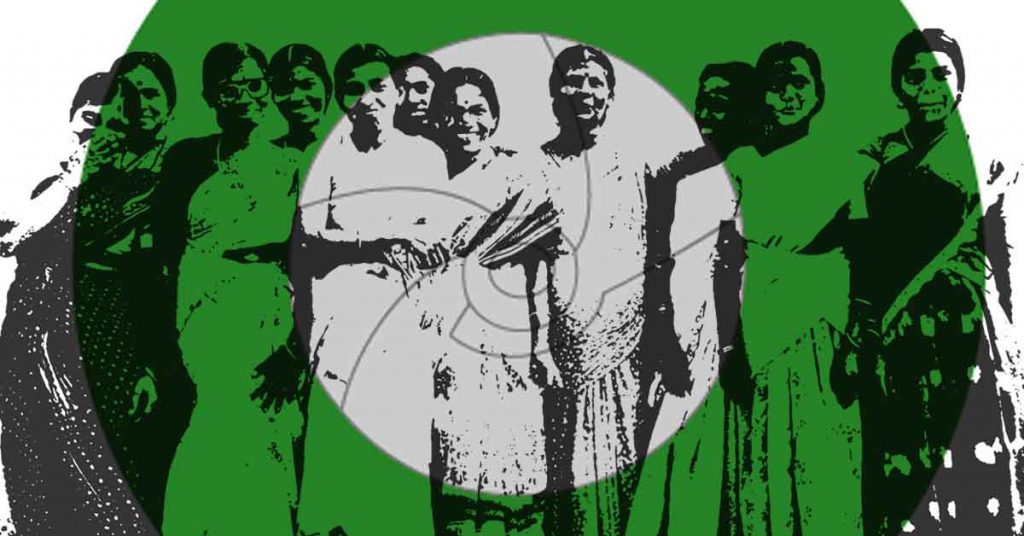
Many visitors felt that communicating the Auroville dream was crucial to its manifestation. Highlighting the courage and perseverance that it took to build Auroville brought a sense of humility and aspiration to all those wanting to take this dream forward.
“Despite being a member of the Auroville community, I was not aware of all these activities happening around Auroville. I believe ABDA will greatly help showcase all the important neighborhood activities, educating both the community as well as visitors to Auroville. Creating a comprehensive Tamil version of the exhibition was an inclusive step that ensured local communities also got a bird’s eye view of Auroville’s projects.”
Manisha Munjal, IntegralWorld
Extending the exhibition online
As a further step, we created a website (www.abda.org.in) as a digital platform for the ABDA exhibition. This website also helped convey more information on each of the activities, the people behind them and the ways of connecting with and supporting various initiatives. It also reflected the volunteer spirit powering Auroville, where residents offer their time and energy in working towards the common vision of human unity, welcoming others to also espouse and take forward this greater cause.
Impact
Inaugurating ABDA at the Sangamam festival was extremely useful in communicating the symbiotic development of Auroville and the communities in the surrounding bioregion over the years. The festival was conducted after a gap of 38 years and therefore was a rare opportunity necessitating an easily accessible update on Auroville’s projects. The ~6,000 people who came to the event were a well-mixed audience of community members as well as visitors and guests for whom ABDA was a highly educational snapshot of Auroville’s work.
The permanent ABDA exhibition became not only a space to showcase the invisible activities and initiatives of Auroville for the bioregion, but also a platform to link like-minded people and visitors interested in either the thematic areas or specific projects to connect with project stakeholders. The visitors could also help project owners raise more funds either through individual donations or otherwise and thus strengthen and expand their programmes.
Equally, The Tamil version of the exhibition acted as alink with the local community, establishing their credentials and helping them see and understand the opportunities available to them which can help in their development. The exhibition was also an opportunity for volunteers to take stock of Auroville’s projects and neighborhood activities and gain first-hand experience in working on-ground with the beneficiaries of the projects.
ABDA thus became an exhibition of the physical and chronological development of Auroville, emphasising Auroville’s theme of endless education and the vision of human unity.
Keywords: community development, rural development, integrated rural development, bioregion development, community, education, endless education, continuous learning, employment, human unity, collective, sustainable, ecological, equitable, alternative sustainable technology, renewable energy, alternative building techniques, integrated wastewater management, economic development, health, culture, sports, accessibility, environment, festival, exhibition.
